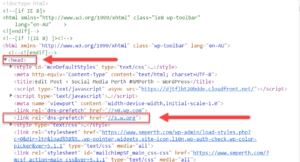Canonical URL, otherwise known as rel=canonical, is a way for you to let search engines know that similar URLs contain exactly the same content – known as duplicate content.
rel=canonical lets you use link tags to let Google understand your duplicate without reducing your rankings.
Why use Canonical URL?
If you have several different URLs of the exact same content, you can select one “canonical” version and direct the search engines to that particular URL. This helps to solve duplicate content issues that can often cause issues with some search engines.
By selecting a canonical URL for content with URLs you can improve the SEO of your website. This process is similar to a 302 redirect, but without actually redirecting.
Usually the original piece of content should become the canonical URL. But, if you’re not sure what URL to canonicalize, just pick one – selecting one is better than having nothing at all.
How to Define a Canonical URL
So, you have two different URLs with the same content.
For example:
- https://smperth.com/resources/facebook-ads
- https://smperth.com/resources/facebook/ads
rel=canonical was developed to solve this very problem. It’s particularly common with e-commerce websites where products can have multiple URLs.
This is how you apply rel=canonical
- Pick one of the pages that contain the duplicate content. Try to select the version with the most links or visitors. If the numbers are close to identical, just select one of them.
- Add a rel=canonical link to the page you selected. In the <head> section of the page you would write:
<link rel=”canonical” href=”https://smperth.com/resources/facebook-ads/”
Below is where you want to be placing your canonical link:

Done! You have successfully added a canonical link to your website.
This process combines all the pages you had with duplicate content into one page from a search engine’s point of view, without having to redirect users.
Using Cross-domain Canonical URLs
Some sites, with permission of course, could republish articles from your websites to their own website. Websites do this if they think the content is relevant for their website visitors.
By having your article defined with a rel=canonical link that points to the original article, it improves your ranking of the original article without search engines classifying your content as duplicate content from different websites.
This is a way for everyone to win, other websites can use your content to provide value to their audience and your get an improved Google ranking!
Enjoyed this article? Enter your email below for social media tips & tricks delivered to your inbox every Monday morning.









LET’S CONNECT